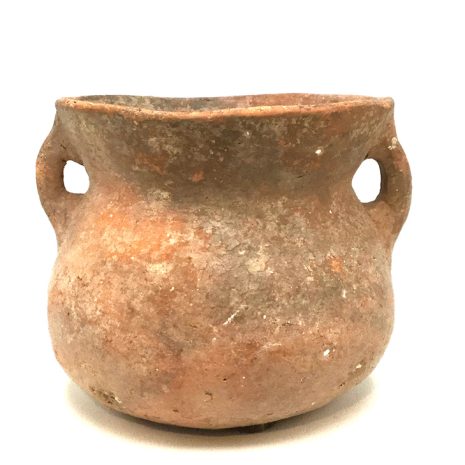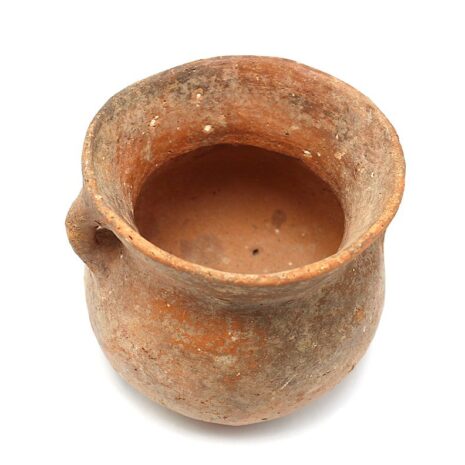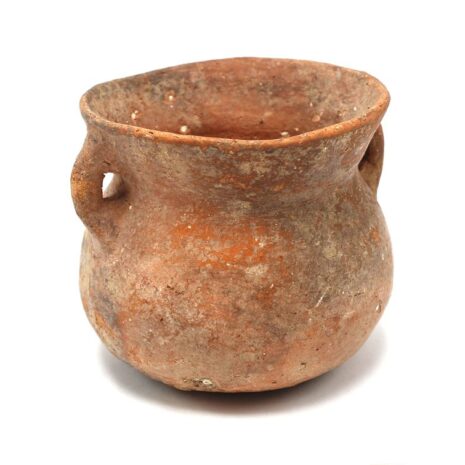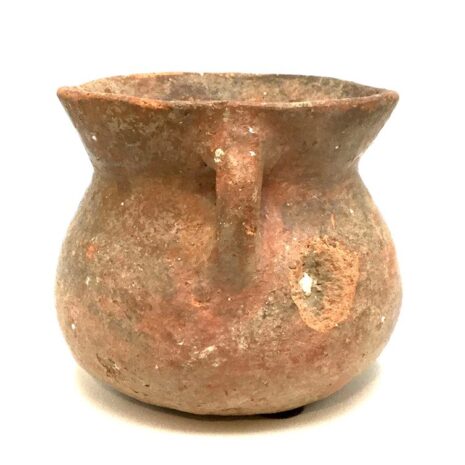Ancient Holy Land Biblical Period Pottery Vessel, Judea (1933)
Original price was: $395.00.$275.00Current price is: $275.00.
H: 3.375” W: 4.25” D: 3.75” | FREE SHIPPING WITHIN CONTINENTAL U.S.
This ancient Judean vessel created during Israel’s Biblical Period was hand shaped using the coil method. It likely held potable liquids, cooking oil or other items. This is a rather sophisticated piece for Bronze Age vessel made millennia ago.
Description
The Biblical Period corresponds to the Middle to Late Bronze Age in the Holy Land (the Levant circa 2300-1200 BCE) when ancient pottery was made by molding wet clay into shapes (the coil construction method) and then finishing its shape by removing the clay’s excess moisture using the paddle-and-anvil technique) before firing. Made in Judea during the Judean Period (934-586BCE), it corresponds to the dates of the first Jewish Temple built in the ancient Levant. Pouring vessels like this earthenware piece were fired in a process called pit-firing. A large hole was dug into the ground and long-burning materials were added to surround each object bringing the heat to 800-850 degrees Celsius. This changed the clay’s molecular structure, permanently fusing it into an irreversible shape.
This ancient vessel has a globular body, flat bottom, short neck, outward flared mouth and small handles with an uneven colored surface. Irregular colored surfaces are normal for pit-fired pieces, as an abundance or a lack of oxygen around any surface results in areas of different colors or shade variations rather than a uniform coloration. It was covered with a reddish slip and was slightly burnished before its firing to seal and harden the object and make it less porous and prevent leakage.
. Probably made to hold potable beverages, cooking oil or other food-related items, it has normal scrapes, minor chips, a white substance in the clay and a thin chip with a pinhole penetration through the bottom. All these are expected and a normal condition for an ancient Bronze Age vessel.
Additional information
| Weight | 5 lbs |
|---|---|
| Dimensions | 8 × 8 × 8 in |
| Place of Origin | Ancient Mediterranean |
| Period | Ancient, Biblical Period |
| Date | Middle to Late Bronze Age (2000-1200BCE) |
| Materials and Technique | Earthenware |
| Dimensions (inches) | Ht: 3.375" W: 4.25” D: 3.75” |
| Dimensions (metric) | Ht: 8.57cm W: 10.79cm Dia: 9.52cm |
| Weight | 7.8oz |
| Condition | Very good, see description |
| Shipping Box Size | |
| Item Number | 1933VHK |








